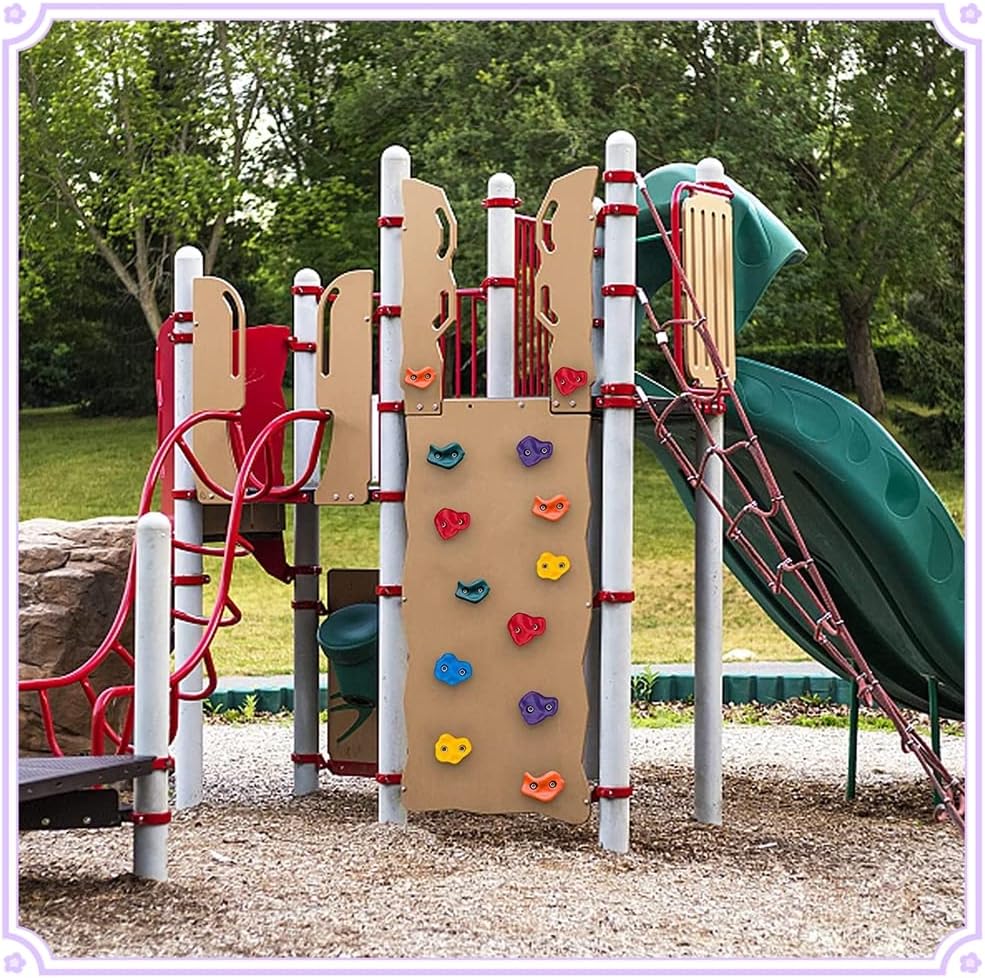How to Install Climbing Holds Safely at Home
Indoor climbing is a fun and challenging activity that can be enjoyed by people of all ages. If you’re looking to set up a climbing wall at home, it’s important to ensure that the climbing holds are installed securely and safely. With the right tools and proper precautions, you can create an exciting climbing experience without any hassle. Here’s a step-by-step guide on how to safely install climbing holds at home.
1. Choose the Right Wall
Before installing climbing holds, ensure that you have the right kind of wall. You can set up your climbing holds on:
- Plywood Wall: Plywood is a great material for DIY climbing walls due to its strength and ease of installation.
- Drywall: If you plan to install climbing holds on drywall, you’ll need additional reinforcements like plywood or studs behind the drywall.
- Dedicated Climbing Wall: If you already have a specialized climbing wall frame, that’s perfect for installation.
Make sure the wall is sturdy and strong enough to support the weight of the climbers and the climbing holds.
2. Select the Right Climbing Holds
Choose climbing holds that are suitable for your experience level. A mix of large, medium, and small holds will provide variety and challenge. Ensure that the holds are made from durable, high-quality materials like resin or rubber to withstand the wear and tear of climbing.
3. Gather Necessary Tools
You’ll need a few tools to install the climbing holds securely:
- Drill: A power drill with the correct drill bits is essential for creating holes in your wall.
- Screws: Use screws long enough to secure the climbing holds tightly to the wall. Ensure they are suitable for the material of your wall.
- Wrench or Screwdriver: To tighten the screws securely into the climbing holds.
- Level: To make sure the holds are aligned properly.
- Measuring Tape: For precise placement of the climbing holds.
- Pencil or Marker: To mark where the holes will go.
4. Plan the Layout of the Climbing Holds
Before drilling any holes, take time to plan the layout of your climbing holds. Start by marking where you want to place each hold. Use a pencil or marker to outline the spots. Make sure there’s enough space between each hold for climbers to move comfortably from one to the next. You can opt for a variety of patterns such as vertical, diagonal, or scattered.
5. Drill Holes for the Climbing Holds
Once you’ve marked the spots for the climbing holds, it’s time to drill holes into the wall. Choose the appropriate drill bit size according to the size of the screws you’re using. Drill the holes carefully and slowly to avoid damaging the wall or making the holes too large.
6. Attach the Climbing Holds
Now, it’s time to attach the climbing holds. Align the holes in the climbing holds with the drilled holes in the wall. Insert the screws through the holes in the climbing holds and into the wall, tightening them securely with a wrench or screwdriver. Make sure each hold is firmly attached and doesn’t wiggle or move.
7. Check for Stability
Once all the climbing holds are installed, give each one a gentle tug to ensure they’re secure. If any holds feel loose, tighten the screws further. It’s crucial to make sure the holds are tightly secured to prevent accidents while climbing.
8. Test the Wall
Before you or anyone else climbs on the wall, do a final check to ensure everything is safe. Test each climbing hold to make sure it’s strong and stable. It’s a good idea to do a light test by gently applying some weight on each hold to check for sturdiness.
9. Safety Precautions
- Padding: To minimize the risk of injury, consider adding padded mats or foam around the base of the climbing wall.
- Spotting: Always have a spotter or someone nearby, especially if beginners or children are using the wall.
- Proper Footwear: Make sure climbers wear appropriate climbing shoes or footwear for better grip and safety.
- Regular Inspections: Periodically check the climbing holds to ensure they are still securely attached.
10. Enjoy Your New Climbing Wall
With the climbing holds safely installed, you’re ready to enjoy your new home climbing wall! Whether you’re using it for fun, fitness, or training, be sure to maintain the wall regularly and continue to challenge yourself by rearranging the climbing holds for different routes.
Conclusion
Setting up a climbing wall at home can be a rewarding and exciting project. By following these simple steps, you can ensure that your climbing holds are securely installed, providing a safe and fun environment for climbers of all levels. With the right planning, tools, and safety measures, you’ll be able to enjoy the thrill of indoor climbing from the comfort of your own home.
Happy climbing!

